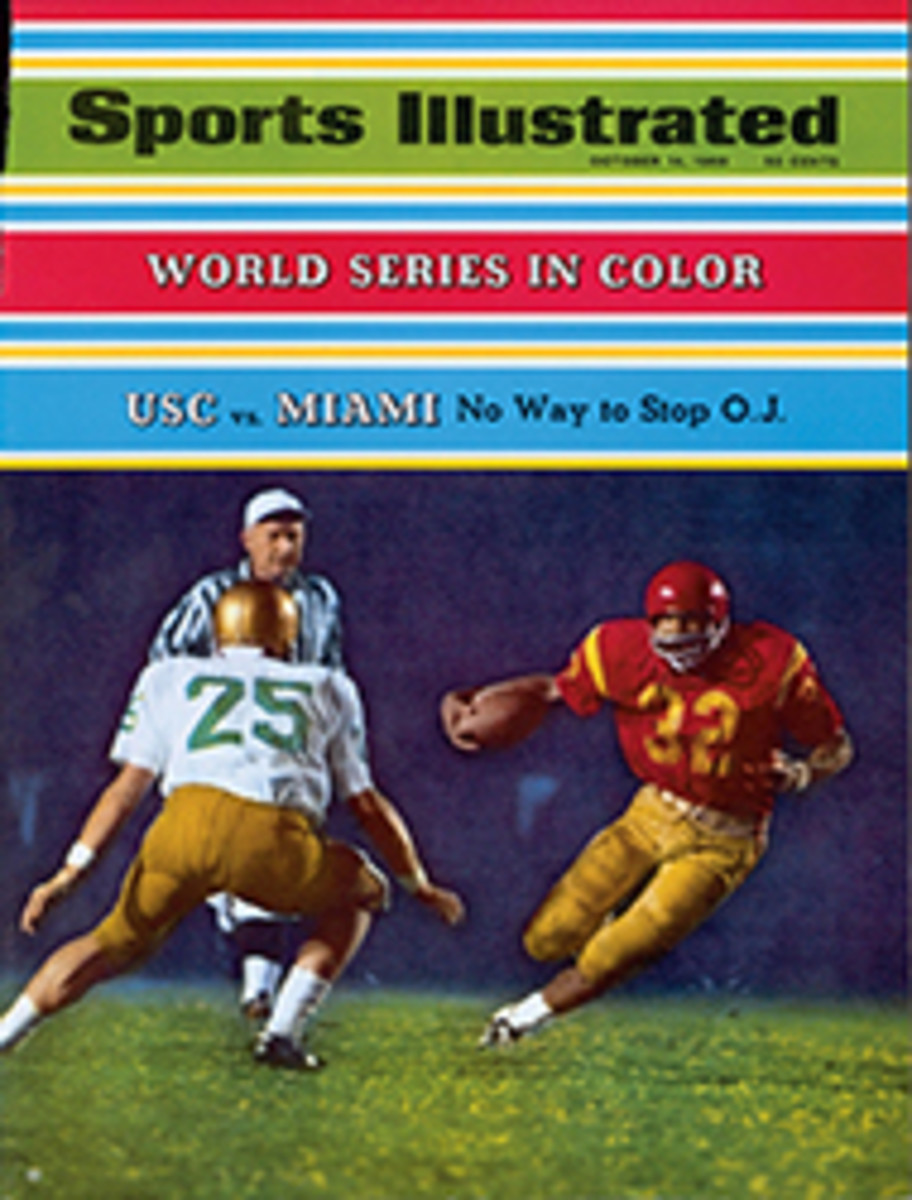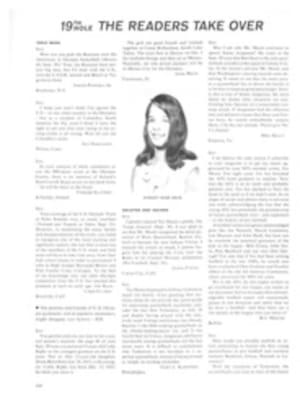
A Scot wings it at the Glen
Scotland and France are united only by their historical dislike of England, but all three countries got together last Sunday at Watkins Glen, N.Y. to win the United States Grand Prix and add further to one of the most exciting races in years for the world driving championship.
The Scotsman was Jackie Stewart, the car was a French Matra, the engine was a made-in-England Cosworth Ford V-8, and the three performed flawlessly as Stewart led for all of the 248 miles before the usual big crowd (an estimated 93,000 spectators) in the customary cold weather (below freezing in the night) to pass defending champion Denis Hulme and to press this year's leader, Graham Hill, in their three-way race for the title. With only the Mexican Grand Prix on Nov. 3 left on the 12-race calendar, Hill, who finished a distant second to Stewart at the Glen, has 39 points, Stewart 36 and Hulme 33.
But for American racing fans, perhaps the most significant event of the weekend was the fact that Mario Andretti, the Indy driver who was competing in his first Grand Prix ever, woke up race day and found himself sitting right there where he has sat in almost every race he has entered—on the pole. And that, ladies and gentlemen, is a world championship first. The fact that he was forced to retire after just 32 laps of the 108-lap race took nothing away from that accomplishment.
It was no great secret, of course, that Andretti knew how to drive a car; his career has been meteoric. In big cars and stock cars he is one of the elite. Formula I racing, though, was supposed to be another matter. The delicate, twitchy (three-liter, 183-cu.-in.), open-wheel racers represent the highest challenge a driver can be offered. Take a good driver, so they say, give him a year to learn the circuits, and then, maybe, he will be competitive.
Before last Friday, Andretti had seen the Glen circuit only once but had never driven it. So Friday morning he hitched a ride on a fire marshal's pickup truck and trundled around the course to see what the thing looked like, then proceeded to work the kinks out of the car and himself during the next two days. "I can't talk about this car like I can my Indy car," he said. "I don't know it that well. But Colin Chapman [the builder] is very good about figuring out what I mean when I tell him something."
By late Saturday, Andretti was down to a lap time of 1:04.7 (127.98 mph)—very quick but only fourth fastest. Then came the real shocker. Andretti, getting some help from Honda's John Surtees in the form of a slipstreaming tow, slithered around in 1:04.2, a full 1.28 seconds under Hill's year-old practice lap record and half a second better than his own previous best.
Andretti said, "I was pleasantly surprised." Said an aide to Bruce McLaren: "Guys break their backs to pick up tenths of seconds, and he gets down by a half a second. Bloody good, actually."
Another USAC refugee, Indianapolis 500 champion Bobby Unser, was less fortunate in his sluggish BRM factory car, crashing and then blowing an engine in practice. The irony of Andretti and Unser's relative performance at Watkins Glen is that they are locked in a tight duel for the current USAC driving championship—Unser leads by 163 points—and Andretti has indicated that if he loses the title he will drive for Lotus full time in Europe next year.
As the race started Andretti actually led Stewart for half of the first lap before Jackie took over. Andretti made a quick pit stop on the 13th lap to remove a front spoiler that had worked loose and was dragging on the ground, then retired 18 laps later with a fractured clutch.
Stewart's Matra was clearly superior to the rest. At the end he had lapped everybody but Hill, and his final margin over the dapper Englishman was 25 seconds. John Surtees edged Dan Gurney for third on the last lap when Gurney ran out of gas.
In victory Stewart was as witty and gracious as ever, but he saved his best words for Andretti.
"It doesn't surprise me that he went fast," Stewart said, "only that he did it the first time out."
Andretti's feat took most of the attention away from what had been advertised as the week's main attraction—the close race for the Grand Prix driving title—but nothing could mask the weird new look of the racing cars.
At the Belgian Grand Prix in June the Ferraris of Chris Amon and Jackie Ickx suddenly appeared with huge airfoils, or wings, over their rear wheels. The theory was simple. The lightweight racers (minimum weight: 1,100 pounds) were getting airborne at high speeds, and the wing would create a downward thrust to keep a car on the ground. At the Glen every factory team had wings, plus anti-takeoff flaps up front.
PHOTO
WINNER JACKIE STEWART'S MATRA-FORD SPORTS THE NEWLY FASHIONABLE AIRFOIL

